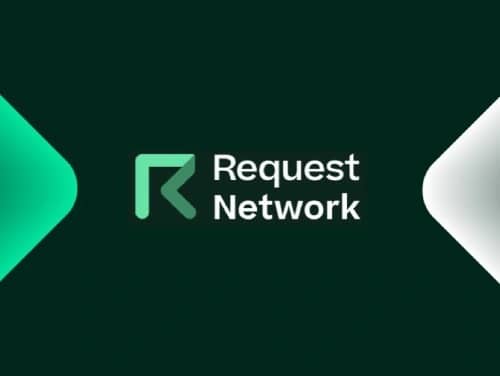订阅 wiki
Share wiki
Bookmark
Request Network
Request Network
Request Network 是一个建立在 区块链 技术之上的去中心化支付系统,它使任何人都可以通过安全的方式请求付款和收款,而无需第三方。它作为一个开源协议,用于创建、共享和完成支付请求,并实现自动实时对账。[1][2]
概述
Request Network 作为一个金融基础设施层,简化了企业和个人的发票、支付和会计流程。
该平台消除了支付过程中的中介机构,从而降低了交易成本,同时保持了高安全标准。通过利用 区块链 技术,Request Network 创建了所有交易的不可篡改记录,提供了透明且可审计的支付历史。
该协议跨多个区块链运行,包括 以太坊 和 Polygon,允许用户以各种加密货币和 法定货币 创建支付请求。
每个请求都包含有关收款人、金额和可选条款和条件的信息,这些信息有效地将简单的请求转换为正式发票。一旦创建,这些请求将被记录并存储在 区块链 上,使所有各方都可以跟踪发票和付款以进行会计处理。
Request Network 已处理超过 10 亿美元的交易量,每月处理约 30,000 笔交易,并为 3,000 多家公司提供服务。该平台的基础设施设计为模块化和灵活的,允许开发人员在该协议之上构建各种金融应用程序。[1] [2]
技术
协议架构
Request Network 的架构由几个关键组件组成,这些组件协同工作以实现其功能:
- Request Gateway:提供高级 API,允许通过开发人员友好的界面无缝交互,以管理 区块链 密钥、身份、gas 购买和其他功能 [1]。
- 支付处理器:将 Request 连接到各种支付网络(包括 比特币、以太坊 和法定货币),自动检测支付并更新请求状态 [1]。
- IPFS 集成:使用星际文件系统进行内容可寻址的对等存储,并在分布式系统中共享支付数据 [1]。
- Request 节点:批量处理交易,将其存储在 IPFS 和 以太坊 上,并为用户 抽象 gas 和基础设施的复杂性 [1]。
- 智能合约:处理协议的 核心 逻辑,包括请求创建、支付检测和状态更新 [2]。
跨链能力
Request Network 支持跨链支付,允许用户使用与原始请求中指定的不同的加密货币支付发票。此功能为付款人和收款人提供了更大的灵活性,因为它适应了各种代币偏好,同时保持了准确的会计记录 [3]。
支付类型
该平台支持多种支付方式:
- 原生支付:以请求的 加密货币 直接支付
- 转换支付:以与请求的不同的 加密货币 支付
- 声明式支付:手动确认链下支付
- Swap-to-Pay:自动将一种 加密货币 转换为另一种以进行支付
- 批量支付:在单个交易中支付多个请求
- 托管支付:资金保存在智能合约中,直到满足条件
- 流动支付:随时间持续支付。[4]
特点
发票处理
Request Network 提供全面的发票处理功能,允许企业:
- 创建和发送具有可自定义模板的专业发票
- 实时跟踪付款状态
- 维护所有发票历史记录的不可篡改记录
- 自动将付款与发票对账
- 支持多种货币和支付方式
该平台的发票系统旨在与现有的会计软件集成,使企业更容易采用基于区块链的支付解决方案,而不会中断其当前的工作流程 [5]。
支付
Request Network 促进各种支付场景:
- 直接加密货币支付:接受超过 25 个区块链的支付,费用低廉且即时结算
- 跨链支付:允许付款人使用与请求的不同的加密货币
- 市场支付:在平台或市场上实现多方之间的交易
- 工资支付:使用 加密货币 简化工资单流程
支付基础设施旨在具有可扩展性和高效性,具有实时支付检测和自动状态更新 [6]。
API 集成
开发人员可以通过 Request Network API 将 Request Network 的功能集成到他们的应用程序中。这允许:
- 使用单个 API 调用创建和支付请求
- 设置 Webhook 以进行实时支付通知
- 以编程方式管理 API 密钥
- 为最终用户自定义支付体验
该 API 旨在对开发人员友好,具有全面的文档和对各种编程语言的支持 [7]。
REQ 代币
Request Network 协议由其原生实用代币 REQ 提供支持,该代币于 2017 年推出。该代币在生态系统中具有多种用途:
- 反垃圾邮件:通过要求代币质押来防止滥用网络
- 治理:使代币持有者能够参与协议决策
- 质押:允许用户通过支持网络来赚取奖励
- 折扣:为频繁用户提供降低的费用
- 独立性:确保协议可以在不依赖外部资金的情况下运行
REQ 代币的最大供应量为 10 亿个代币,截至 2025 年 5 月,流通量约为 8.4429 亿个 [8]。
历史和发展
Request Network 由 Christophe Lassuyt 和 Etienne Tatur 创立,他们分别担任 Request Network 基金会 的总裁和副总裁。两位创始人都是 YCombinator 的校友,并且之前共同创立了 MONEYTIS [9]。
该项目于 2017 年 10 月启动了代币销售,筹集了约 3360 万美元。从那时起,该平台经历了几个重大发展:
- 2018:在 以太坊 主网 上启动初始协议
- 2020:推出 Request Invoice 产品
- 2021:推出跨链支付功能
- 2022:实施支付流和托管功能
- 2023-2025:扩展到其他区块链并增强 API 功能
开发路线图一直侧重于提高可用性、扩展支持的支付方式以及增强开发人员体验 [1]。
用例
Request Network 为各种行业和服务用例:
商业金融
- 发票和支付:简化发票的创建、发送和支付
- 费用管理:简化业务费用的跟踪和对账
- 工资单:支持基于加密货币的工资支付,并自动计算税款
- 会计:提供用于审计目的的不可篡改记录
市场和平台
- 点对点交易:促进用户之间的直接支付
- 托管服务:持有资金直到满足条件
- 多方支付:管理涉及多个利益相关者的复杂支付流程
DeFi 集成
- 收益生成:与 DeFi 协议连接以生成持有资金的收益
- 贷款:通过 DeFi 贷款平台实现发票融资
- 代币化应收款:允许代币化和交易未来支付
合作伙伴关系和生态系统
Request Network 已与各种组织建立了合作伙伴关系,并被 区块链 生态系统中的众多公司使用。值得注意的用户包括:
- Aave:去中心化借贷平台
- Ledger:硬件钱包制造商
- Gnosis:预测市场和多重签名钱包提供商
- NEAR 协议:Layer 1 区块链
- The Sandbox:基于区块链的虚拟世界
- PwC 和 Deloitte:专业服务公司
- OpenZeppelin:智能合约安全公司[1]
该生态系统还包括建立在 Request Network 协议之上的各种工具和应用程序,例如:
发现错误了吗?
